
- Home
- Workshops / Tours
- Diary / Blog
- Galleries
- Foreign Trips
- Tasmania 2016
- NE Queensland 2016
- Western Alps 2016
- NE Spain 2016
- Australia's Wet Tropics 2015
- Australia's Top End 2015
- SW Australia 2015
- Switzerland 2015
- Andalucia 2015
- Belize 2015
- Australia 2014
- Switzerland 2014
- Belize 2014
- Bahama Islands 2014
- Switzerland 2013
- Ecuador 2012-2013
- Florida 2011-2012
- Vancouver Island 2011
- Australia 2010
- Peru 2008
- Bulgaria 2007
- Lesvos 2006
- California 2006
- New Zealand 2005
- Extremadura 2005
- Goa, India 2004
- The Gambia 2003
Valais, Switzerland
June 2013
Flowers photographed above 900m but below the tree-line
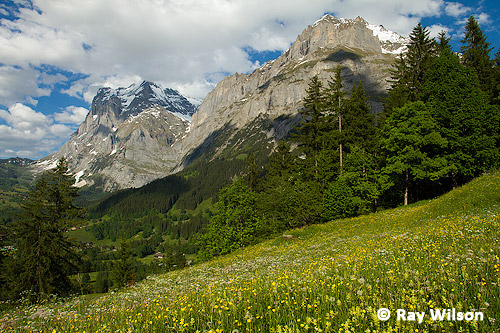
The huge diversity and density of flowers in the mid-elevation pastures and meadows provide blankets of colour to what is already a spectacular landscape. In the meadow photographed above, the two commonest flowers were Yellow Rattle and Spiked Rampion.

Yellow Rattle (Rhinanthus minor) |
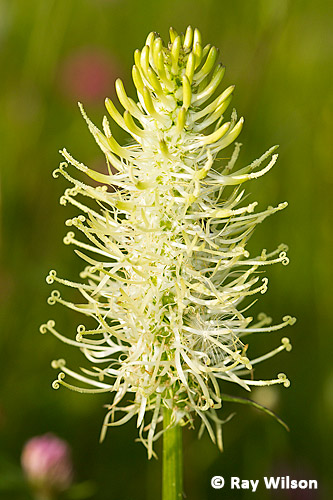
Spiked Rampion (Phyteuma spicatum) |
Other common flowers in the meadows and pastures found at these altitudes include plants like Round-headed Rampion, Bistort, Shrubby Rampion and Flower-of-Jove.
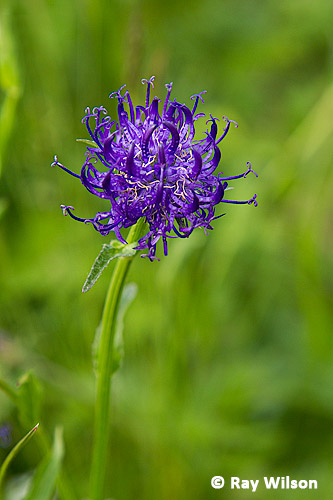
Round-headed Rampion (Phyteuma orbiculare) |
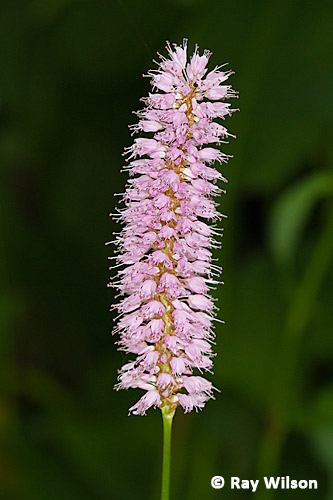
Bistort (Polygonum bistorta) |
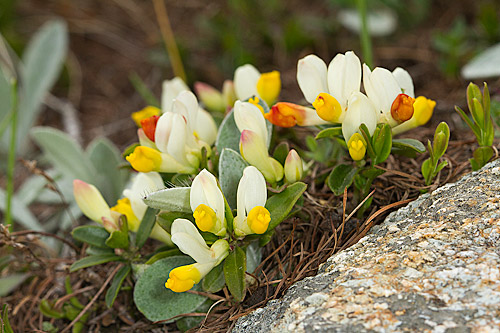
Shrubby Milkwort (Polygala chamaebuxus)

Flower-of-Jove (Silene flos-jovis) - formerly called Lychnis flos-jovis
The extremely hirsute stems and bracts of Flower-of-Jove make this member of the Pink family easy to recognise.

Flower-of-Jove (Silene flos-jovis) - formerly called Lychnis flos-jovis
Far less common were Tassel Hyacinth and Blue Lettuce, both of which have a patchy distribution in south-western Switzerland.

Tassel Hyacinth (Muscari comosum) |
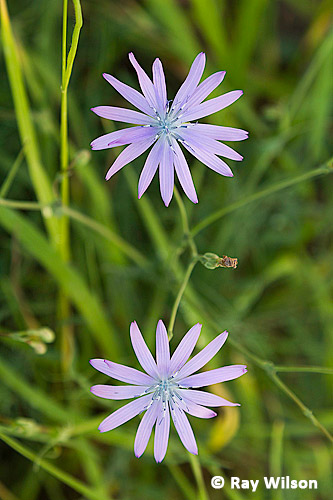
Mountain Lettuce / Blue Lettuce (Lactuca perennis) |
Several species of parasitic Broomrapes also occur in the area. All of them are very similar in appearance but since each of them has a fairly narrow range of hosts, they can usually be easily identified by determining the identity of the species they are parasitising.

Thyme Broomrape (Orobanche alba)
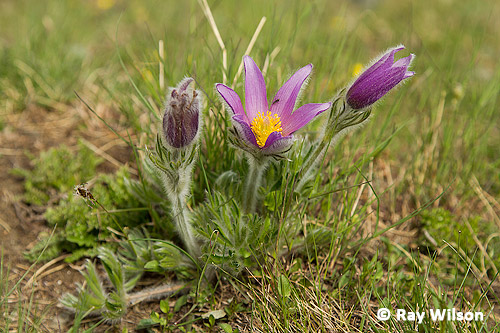
Montane Pasque Flower (Pulsatilla montana)

St. Bruno's Lily (Paradisea liliastrum)
The beautiful, large, showy blooms of both St. Bruno's and St. Bernard's Lilies are a fairly common sight along roadside verges and in pastures.
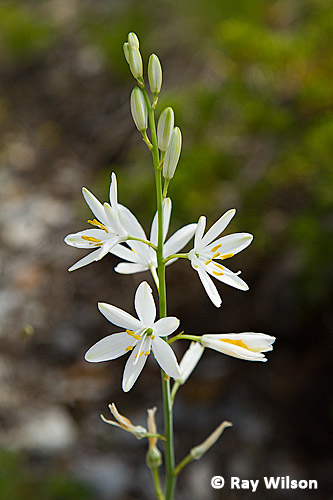
St. Bernard's Lily (Anthericum liliago)

Alpine Aster (Aster alpinus)
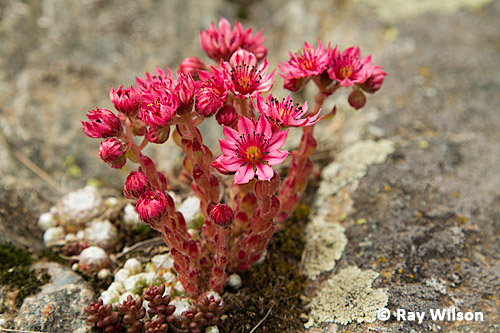
Cobweb Houseleek (Sempervivum arachnoideum)
Houseleeks, like most other members of the stonecrop family, are generally found in rocky places, although Common Houseleek (below) is less fussy in this regard and is also found in dry grassland habitats.
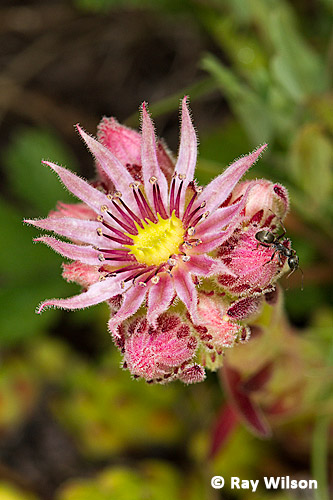 |
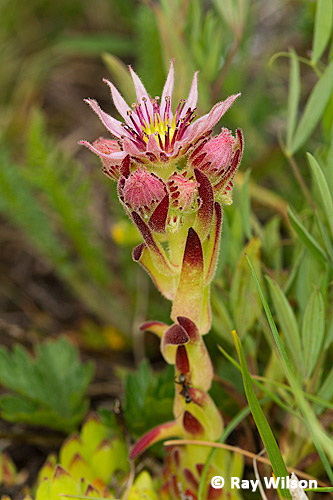 |
Common Houseleek (Sempervivum tectorum)
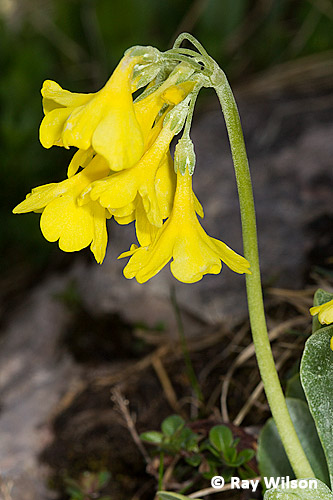
Auricula / Bear's-Ear (Primula auricula)
Auricula occurs in damp pastures or other marshy areas such as those found along stream and river banks.
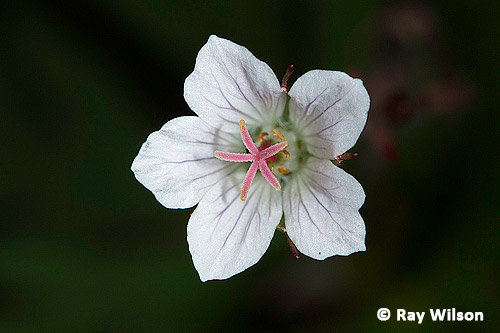
Geranium rivulare
Woodland flowers include Geranium rivulare, Yellow Wood Violet and Spoon-leaved Saxifrage.
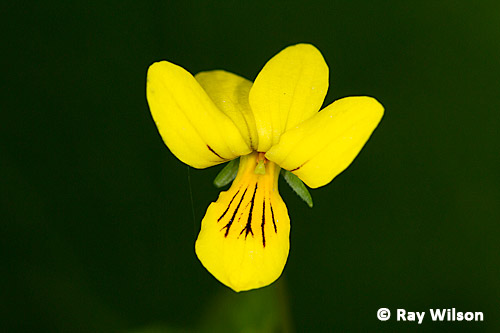
Yellow Wood Violet (Viola biflora)
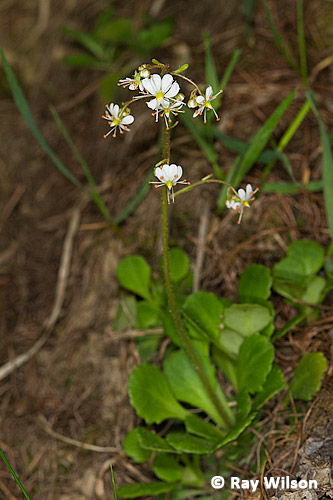
Spoon-leaved Saxifrage (Saxifraga cuneifolia)
Ray Wilson owns the copyright of all images on this site.
They may not be used or copied in any form without prior written permission.
raywilsonphotography@googlemail.com